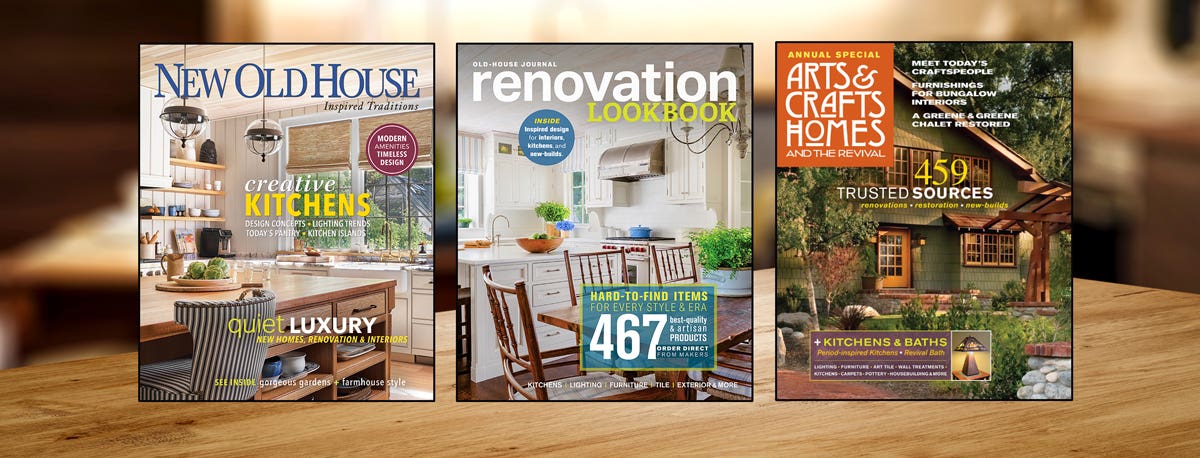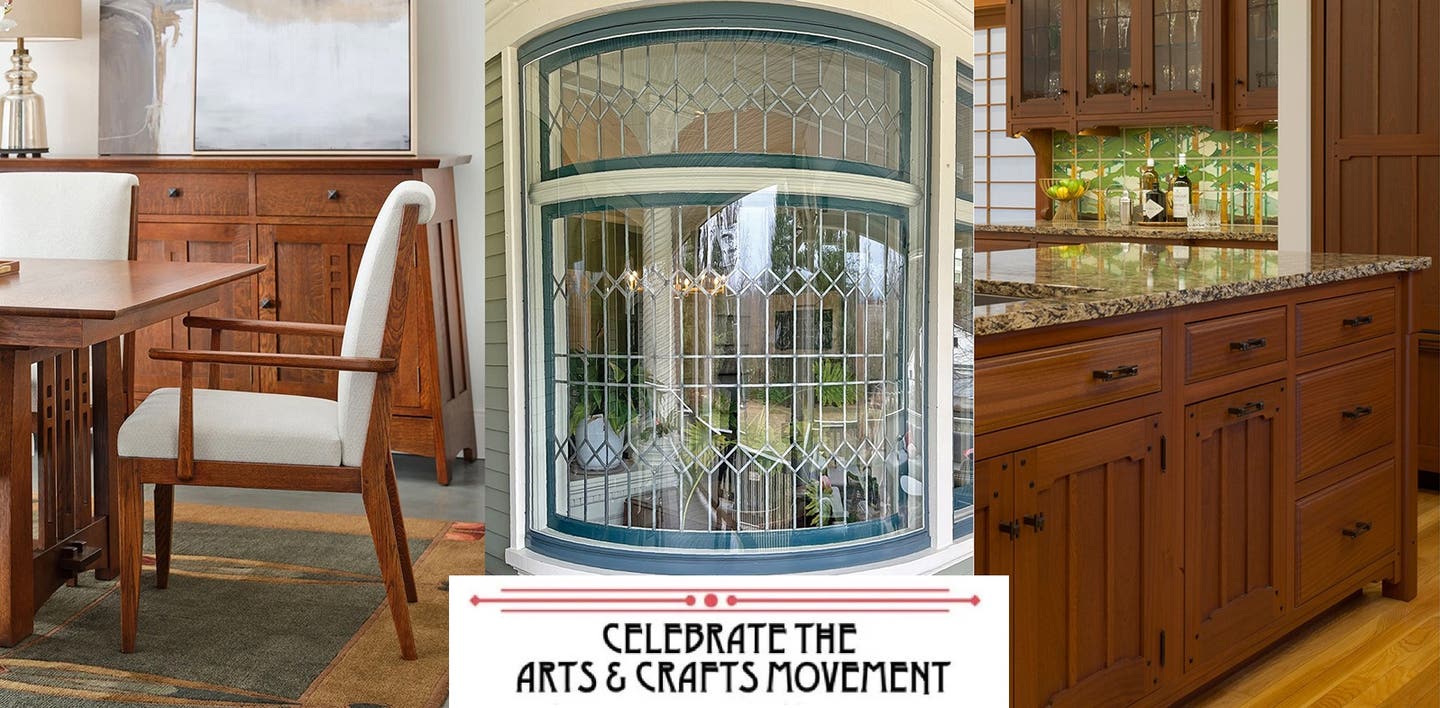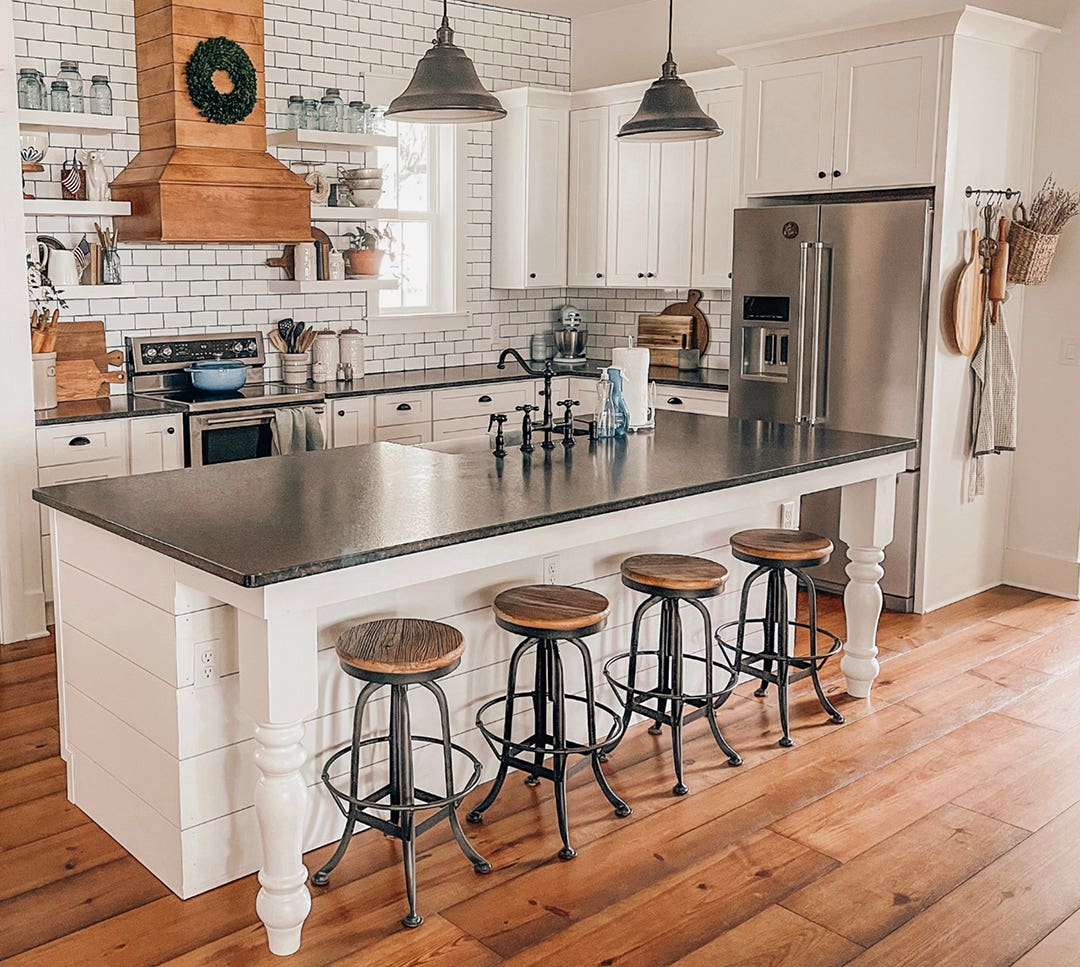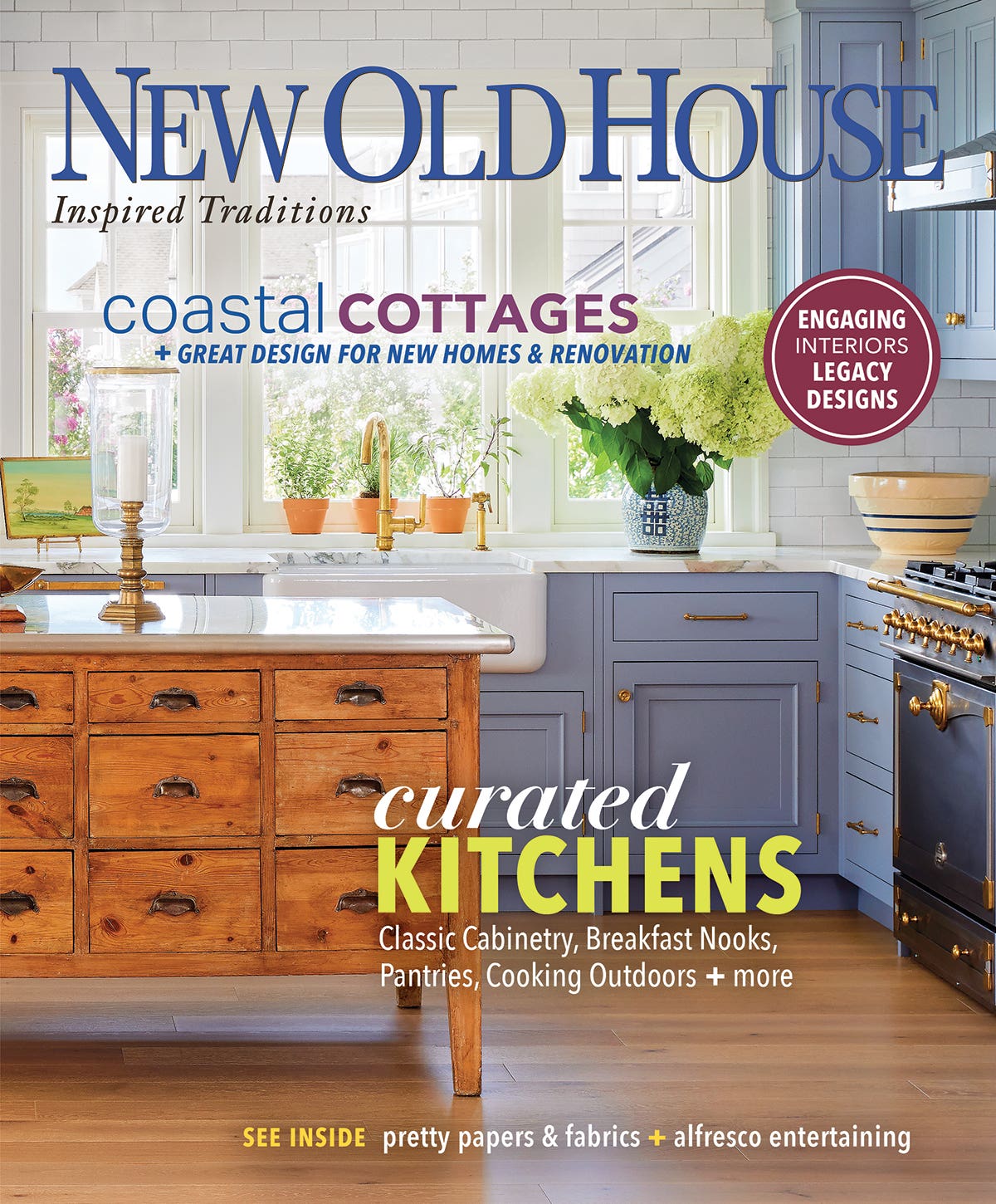Arts & Crafts: Never Boring
Some mischievous, contrarian impulse must have led me to run this issue’s two main features together. Under the heading restoration, we tour a 1911 house in Minnesota. When it comes…
Some mischievous, contrarian impulse must have led me to run this issue’s two main features together. Under the heading restoration, we tour a 1911 house in Minnesota. When it comes to new work, Donna Pizzi takes us to a recently completed rebuild in Oregon. Nothing diabolical there, until you look at the houses.
The new one features pegged joinery and sawn rafter tails, Pewabic tiles and Stickley furniture—even a cozy breakfast nook. A low-slung house with airplane gables, it might have been built a hundred years ago by Greene & Greene or one of their acolytes. Instead, it’s a modern revival home. Yet almost anyone would call this a period house; many would mistake it for an original. Now on the other hand, our featured old house is a restored foursquare stone structure with neoclassical and Prairie School details built on a traditional Georgian plan. Sure, the wainscots and boxed ceiling beams are familiar from period Tudor-style and Craftsman houses. But this house has a lacy Gothic staircase, Adamesque plaster in the formal living room, crystal chandeliers, and 18th-century antique furniture.
“That’s not Arts & Crafts,” I can hear one bungalow chorus chant. I will agree that the St. Paul house is not a bungalow. Oh, but it is Arts & Crafts. Its architect was aware of the movement that was at its height when he designed the house, which is formal and yet vernacular. Many style elements came from the precedents that fed English and American Arts & Crafts designers. It is a handcrafted house.
This lesson—that Arts & Crafts is more an approach to design than it is a style—kept me sane as I labored to decipher, restore, and furnish two category-defying houses. The limestone row house was built in 1911 with a Chicago window, Craftsman woodwork, French mouldings upstairs, and a Federal Revival dormer with clay barrel-tile roofing. Then there is my 1904 Shingle–Tudorbethan cottage—well, that description itself took me a decade to come up with.
Patricia Poore,Editor
ppoore@homebuyerpubs.com
10 Harbor Rd., Gloucester, MA 01930
Patricia Poore is Editor-in-chief of Old House Journal and Arts & Crafts Homes, as well as editorial director at Active Interest Media’s Home Group, overseeing New Old House, Traditional Building, and special-interest publications.
Poore joined Old House Journal when it was a Brooklyn-brownstoner newsletter in the late 1970s. She became owner and publisher and, except for the years 2002–2013, has been its editor. Poore founded the magazines Old-House Interiors (1995–2013) and Early Homes (2004–2017); their content is now available online and folded into Old-House Journal’s wider coverage. Poore also created GARBAGE magazine (1989–1994), the first unaffiliated environmental consumer magazine.
Poore has participated, hands-on, in several restorations, including her own homes: a 1911 brownstone in Park Slope, Brooklyn, and a 1904 Tudor–Shingle Style house in Gloucester, Massachusetts, where she brought up her boys and their wonderful dogs.







